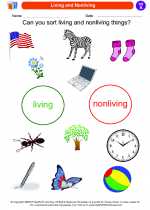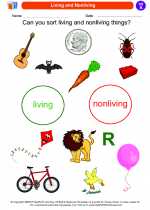Living and Nonliving -> ecosystems
Ecosystems
An ecosystem is a community of living organisms (plants, animals, and microorganisms) in conjunction with the nonliving components of their environment (such as air, water, and mineral soil), interacting as a system. These biotic and abiotic components are interconnected and create a complex web of relationships.
Components of an Ecosystem
- Abiotic factors: Non-living components such as sunlight, temperature, water, soil, and air.
- Biotic factors: Living organisms including plants, animals, and microorganisms.
Types of Ecosystems
Ecosystems can be classified into different types such as:
- Terrestrial Ecosystems: Forests, grasslands, deserts, and tundra.
- Aquatic Ecosystems: Oceans, rivers, lakes, and wetlands.
Food Chains and Food Webs
In an ecosystem, energy flows through the food chain. A food chain is a linear sequence of organisms where each one is a source of food for the next. Multiple interconnected food chains form a food web, illustrating the complex feeding relationships in an ecosystem.
Ecological Relationships
Various ecological relationships exist within an ecosystem, including:
- Predation: One organism (predator) hunts and feeds on another (prey).
- Competition: Organisms compete for resources such as food, water, and shelter.
- Mutualism: A relationship where both organisms benefit from each other.
- Parasitism: One organism (parasite) benefits at the expense of another (host).
Human Impact on Ecosystems
Human activities, such as deforestation, pollution, and overfishing, can have a significant impact on ecosystems, leading to habitat destruction and loss of biodiversity.
Study Guide
When studying ecosystems, consider the following key points:
- Define the components of an ecosystem, including abiotic and biotic factors.
- Identify and describe different types of ecosystems, both terrestrial and aquatic.
- Understand the concept of food chains and food webs, and how energy flows through an ecosystem.
- Explore ecological relationships such as predation, competition, mutualism, and parasitism.
- Discuss the impact of human activities on ecosystems and the environment.


